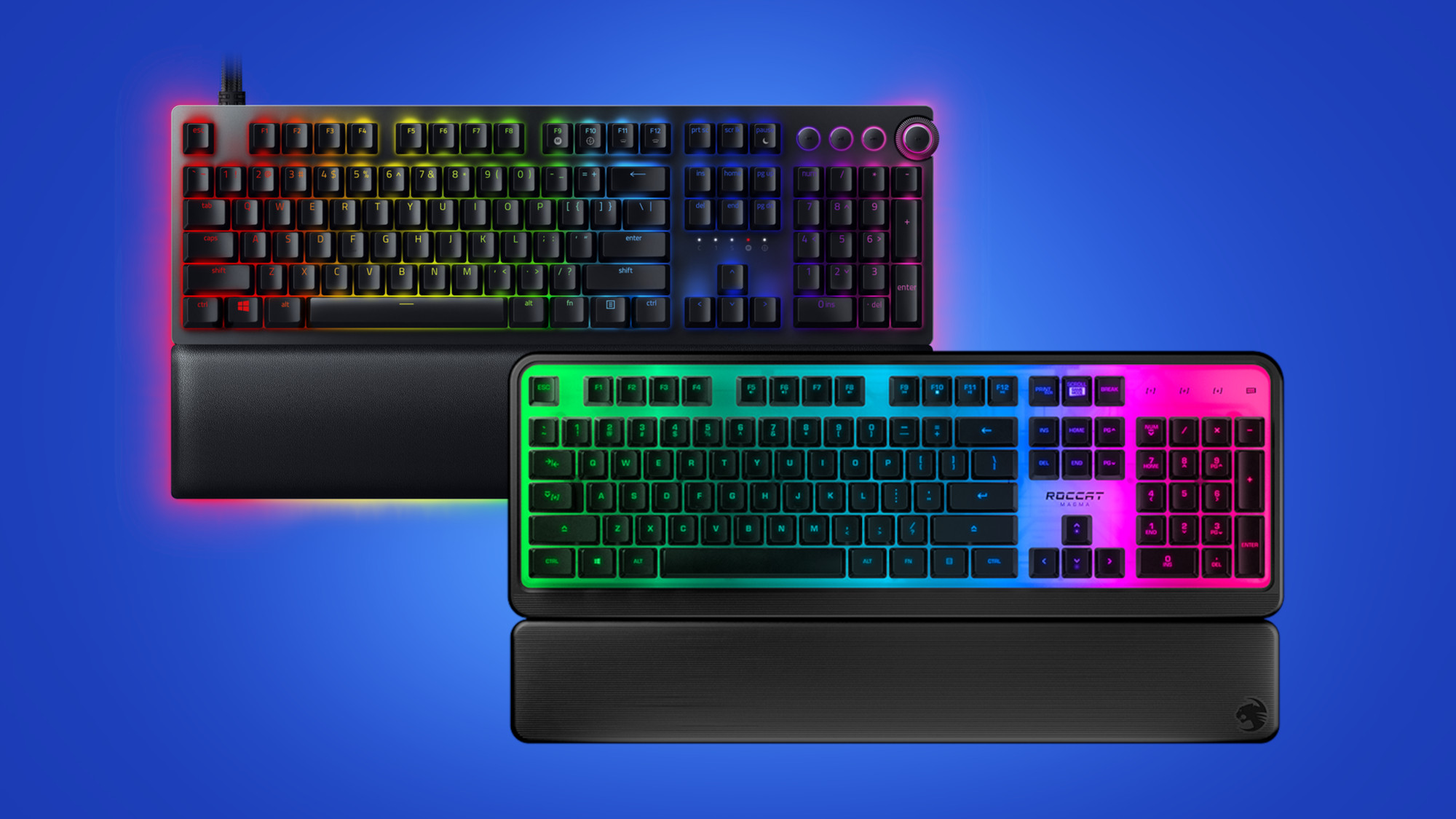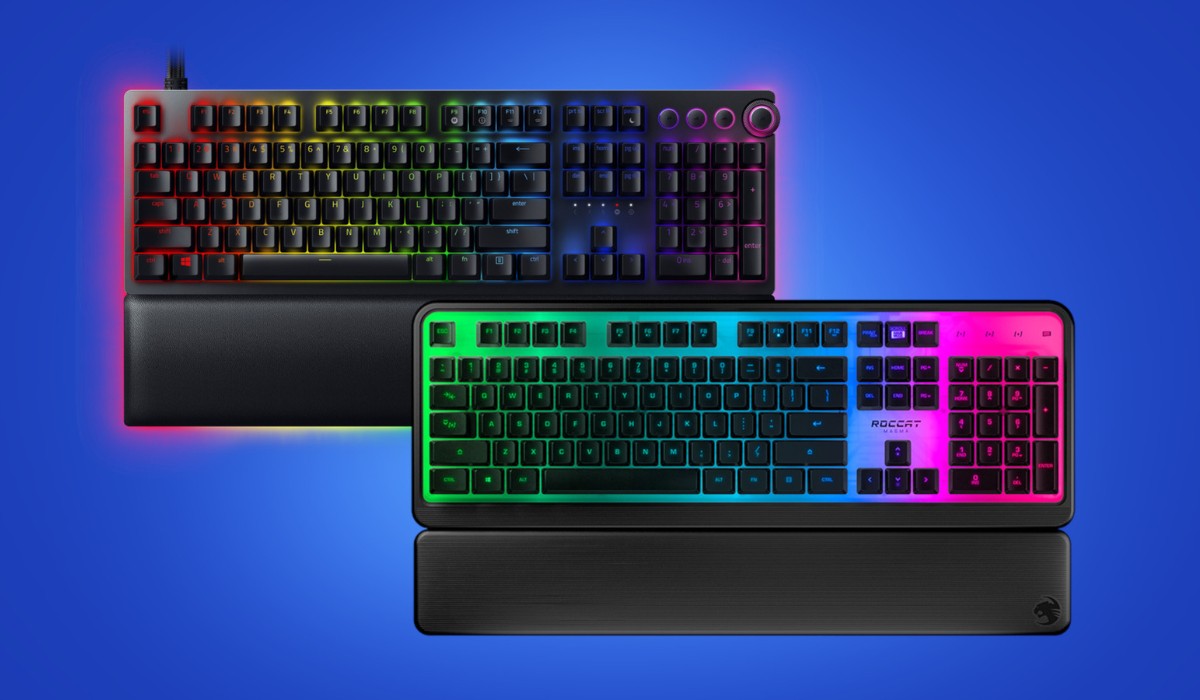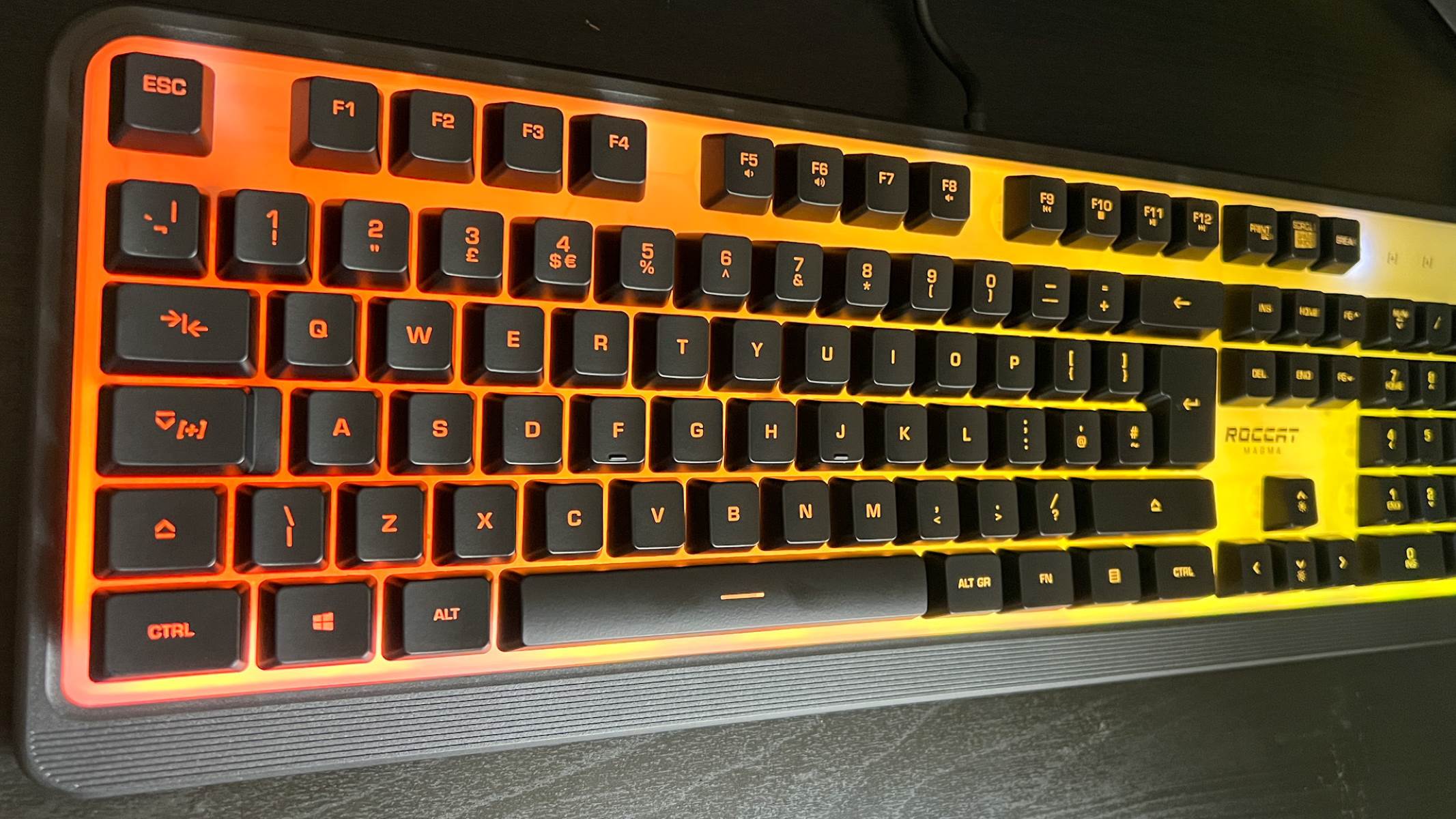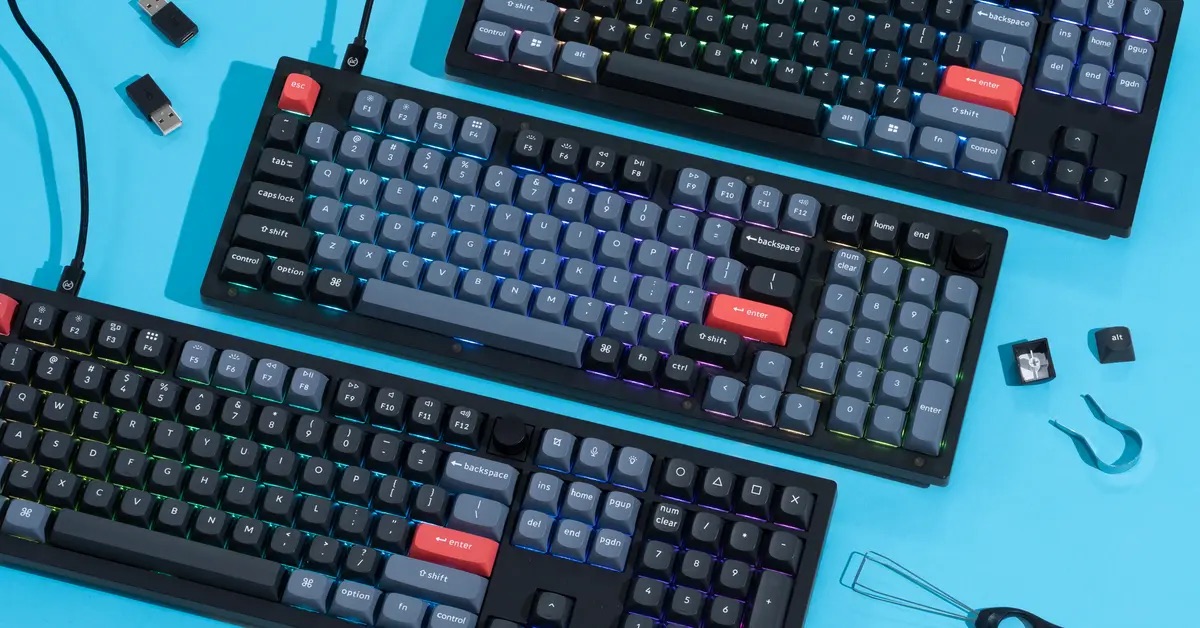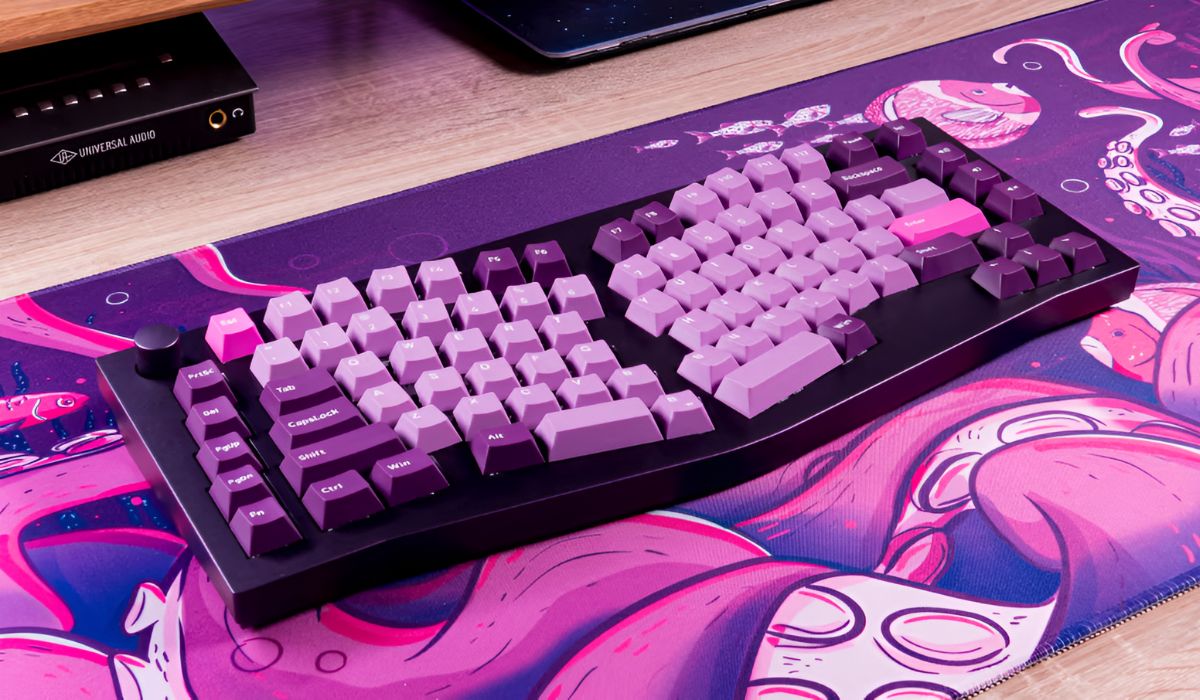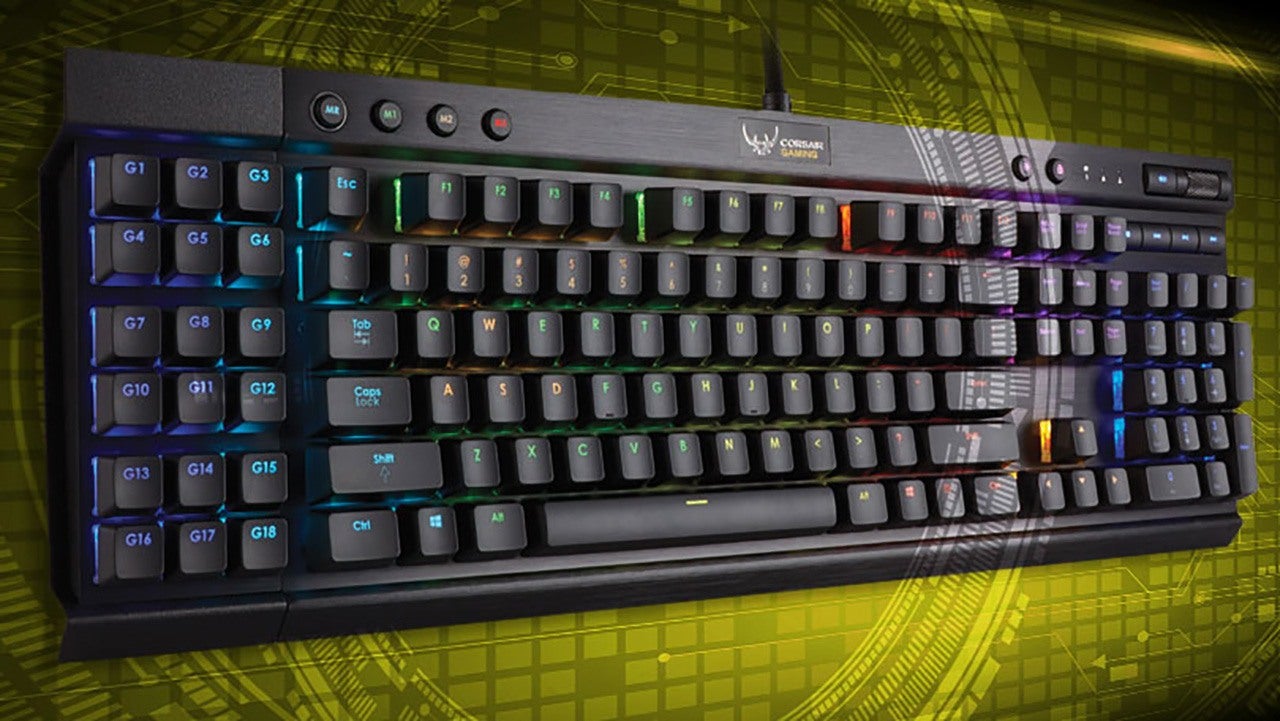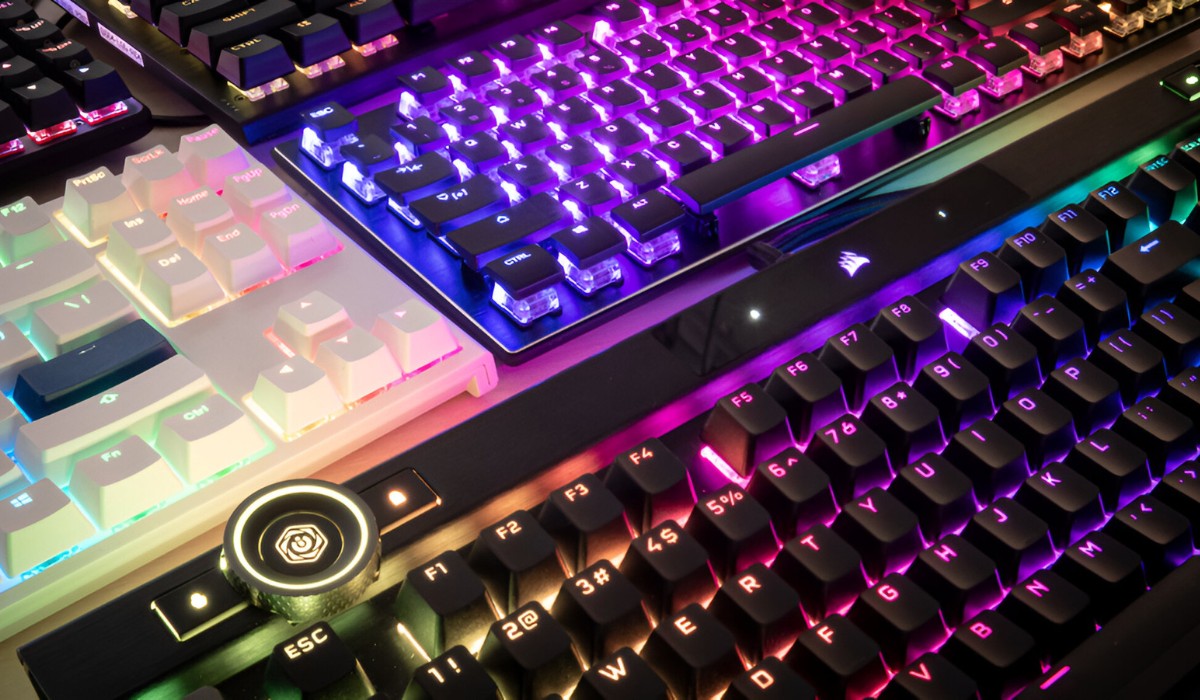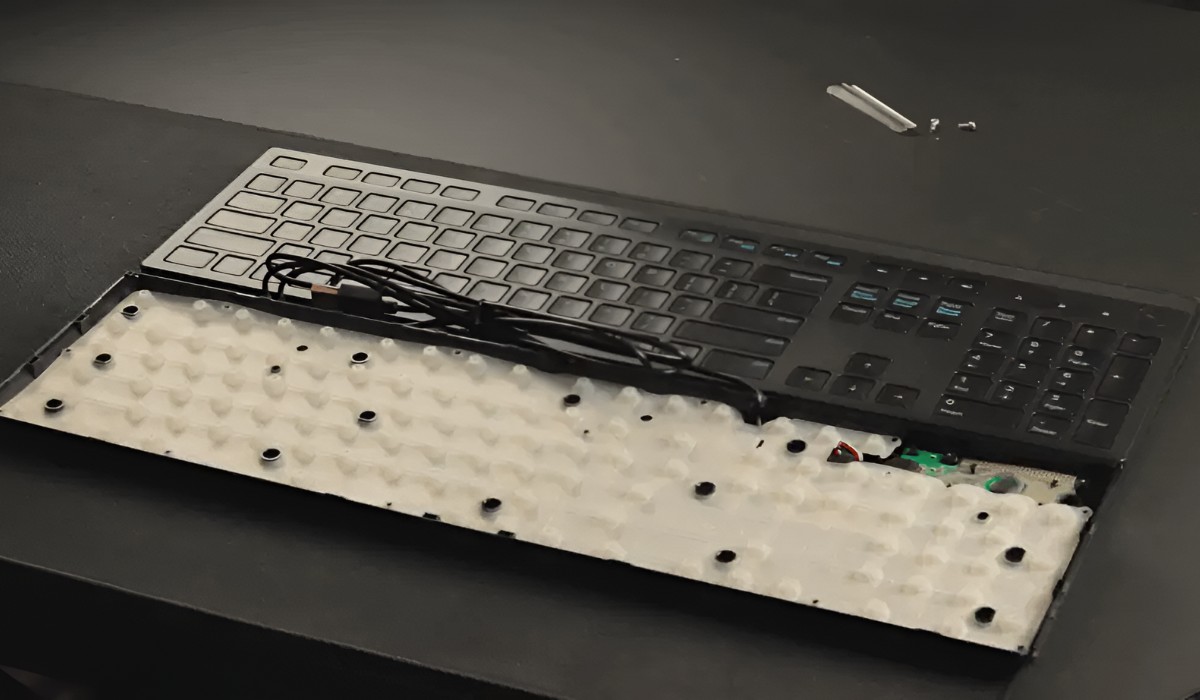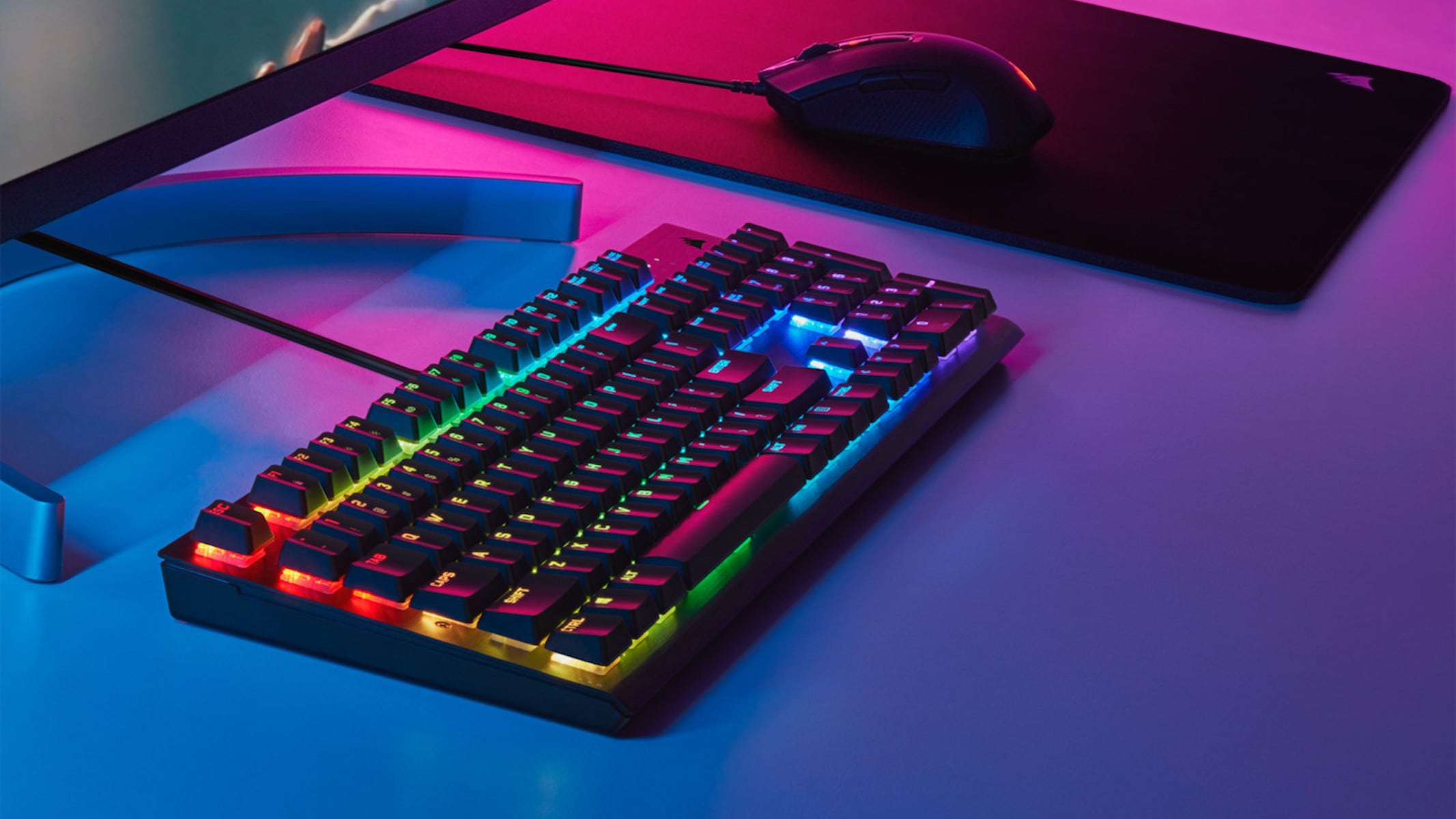Introduction
Welcome to the world of keyboards, where countless options exist to suit every typing preference. One popular type of keyboard that has gained widespread use is the membrane keyboard. Whether you are a gamer, a typist, or simply someone who spends a significant amount of time in front of a computer, understanding the basics of a membrane keyboard can greatly enhance your typing experience.
A membrane keyboard is a type of keyboard that uses a flexible and thin membrane, typically made of silicone or rubber, to register the keystrokes. Unlike mechanical keyboards which use individual switches for each key, membrane keyboards have a single continuous membrane layer underneath the keys, making them more compact and less expensive.
The functioning of a membrane keyboard is quite different from that of a mechanical keyboard. When a key is pressed, the conductive traces on the membrane connect, completing an electrical circuit and sending a signal to the computer. This process is known as “key matrix scanning.” The key matrix scanning technology allows for multiple keys to be pressed simultaneously, known as “key rollover,” which is especially useful for gamers and fast typists.
Membrane keyboards come with their own set of advantages and disadvantages. The primary advantage is their affordability. Membrane keyboards are generally more budget-friendly compared to mechanical keyboards. They are also quieter, which can be beneficial in shared spaces or for those who prefer a noise-free typing experience.
However, the trade-off for the lower cost is a compromise in tactile feedback and durability. Membrane keyboards often lack the satisfying tactile feel of mechanical keyboards, and the membrane can wear out over time, resulting in keys becoming unresponsive or sticky. Despite this, there are different types of membrane keyboards available, each with its own unique features and benefits.
Choosing the right membrane keyboard involves considering factors such as the intended use (gaming, typing, etc.), personal typing preferences, and budget. There are membrane keyboards designed specifically for gamers, with features like customizable RGB lighting and macro keys, while others focus more on providing a comfortable typing experience.
What Is a Membrane Keyboard?
A membrane keyboard is a type of keyboard that uses a flexible and thin membrane, typically made of silicone or rubber, to register the keystrokes. It is a popular alternative to mechanical keyboards, offering a more affordable and compact option for both personal and professional use.
The construction of a membrane keyboard consists of multiple layers. The top layer is the keycap, which is the visible part of the keyboard that you press down on. Below the keycap is a layer of rubber or silicone, known as the membrane layer, that contains the conductive traces or circuits. These circuits are strategically positioned, corresponding to each key on the keyboard.
When a key is pressed on a membrane keyboard, the flexible membrane layer deforms, allowing the conductive traces to make contact and complete an electrical circuit. This circuit closure sends a signal to the computer, indicating which key has been pressed. The key matrix scanning technology allows for multiple keys to be pressed simultaneously, enabling key rollover and enhancing the keyboard’s functionality for fast typists and gamers.
Compared to mechanical keyboards, membrane keyboards have a more compact and low-profile design. They are thinner and lighter, making them easier to transport and fit into smaller spaces. Additionally, membrane keyboards are known for their quiet operation, as they do not have individual mechanical switches like their counterparts.
Membrane keyboards come in various styles and designs to cater to different preferences and needs. Some membrane keyboards have additional features such as backlit keys, multimedia keys, and programmable macros for customization and convenience. These features can be particularly useful for gamers who require quick access to specific commands or for those who use their keyboards for multimedia purposes.
Overall, membrane keyboards provide a cost-effective and functional typing solution. They are widely used in offices, schools, gaming setups, and other environments where reliable and affordable keyboards are in high demand. While they may not offer the same tactile feedback and durability as mechanical keyboards, membrane keyboards are a reliable and accessible choice for many users.
How Does a Membrane Keyboard Work?
A membrane keyboard operates on a simple yet effective mechanism that allows it to register keystrokes and send signals to the computer. By understanding how a membrane keyboard works, you can gain a better appreciation for its inner workings and functionality.
The key component of a membrane keyboard is the flexible and thin membrane layer, typically made of silicone or rubber. This layer contains conductive traces that form a grid pattern, with each row and column corresponding to a specific key on the keyboard. When a key is pressed, it pushes down on the membrane, causing it to deform and make contact with the conductive traces.
The conductive traces on the membrane are typically made of a material that conducts electricity when pressure is applied. When two or more conductive traces meet, they complete an electrical circuit, allowing current to flow through the circuit. This circuit closure is recognized by the keyboard’s controller, which interprets it as the corresponding key being pressed.
Membrane keyboards often employ a technique called “key matrix scanning” to determine the exact key being pressed. This scanning process involves a series of row and column circuits that run through the conductive traces on the membrane. When a key is pressed, it bridges the connection between the corresponding row and column, creating a unique circuit that represents that specific key. The keyboard’s controller can then identify the key based on the circuit pattern and transmit the appropriate signal to the computer.
One advantage of membrane keyboards is the ability to support “key rollover.” Key rollover refers to the ability of a keyboard to handle multiple key presses simultaneously. With membrane keyboards, the conductive traces on the membrane can be designed to allow several keys to be pressed at once, without any signal conflicts. This feature is particularly beneficial for gamers who need to perform complex key combinations or for fast typists who may inadvertently press multiple keys in quick succession.
In summary, a membrane keyboard utilizes a flexible membrane layer with conductive traces to register keystrokes. When a key is pressed, it completes an electrical circuit by connecting the corresponding conductive traces on the membrane. This circuit closure is recognized by the keyboard’s controller, which then sends the appropriate signal to the computer. The key matrix scanning technique and key rollover support enhance the functionality of membrane keyboards, making them suitable for various typing needs.
Advantages of Membrane Keyboards
Membrane keyboards offer several advantages that make them an attractive option for many users. These advantages range from affordability to quieter operation and customization options. Let’s explore some of the key benefits of using a membrane keyboard:
- Affordability: One of the main advantages of membrane keyboards is their affordability. Compared to mechanical keyboards, which often come with a higher price tag due to their complex construction and individual switches for each key, membrane keyboards are more budget-friendly. This makes them a popular choice for those seeking a reliable keyboard without breaking the bank.
- Quiet Operation: Membrane keyboards are known for their quieter operation compared to mechanical keyboards. Since membrane keyboards lack individual switches for each key, the typing experience tends to be much quieter. This makes them ideal for shared spaces such as offices or libraries, where the noise generated by mechanical keyboards may be disruptive.
- Compact Design: Membrane keyboards have a low-profile and compact design. They are typically thinner and lighter compared to their mechanical counterparts. This slim profile not only makes them aesthetically pleasing but also more portable and easier to carry around, making them a great option for frequent travelers or those with limited desk space.
- Customization Options: Many membrane keyboards come with customization features that allow users to personalize their typing experience. This can include features like programmable macro keys, adjustable backlighting, and multimedia shortcuts. These customization options cater to gamers, professionals, and individuals who require quick access to specific functions and commands.
- Durability: While membrane keyboards may not offer the same degree of durability as mechanical keyboards, they are still designed to withstand everyday use. The flexible membrane layer is inherently more resistant to dust and liquid spills, and its sealed design helps protect the underlying circuits from damage. With proper care and maintenance, membrane keyboards can provide lasting performance for an extended period.
It’s important to note that the advantages of membrane keyboards may vary depending on the specific model and brand. Some membrane keyboards may offer additional benefits such as ergonomic designs for improved comfort during prolonged typing sessions or specialized gaming features like anti-ghosting to prevent key signal conflicts. Consider your specific needs and preferences when choosing a membrane keyboard to ensure it aligns with your requirements.
Disadvantages of Membrane Keyboards
While membrane keyboards have several advantages, they also come with a few disadvantages that may impact the typing experience for some users. It’s important to consider these drawbacks when deciding whether a membrane keyboard is the right choice for you. Let’s explore some of the key disadvantages of membrane keyboards:
- Limited Tactile Feedback: One of the main drawbacks of membrane keyboards is their lack of tactile feedback. Unlike mechanical keyboards that have individual switches for each key, membrane keyboards typically have a mushy feel when typing. The absence of the satisfying click or tactile response may be a drawback for those who prefer a more tactile and responsive typing experience.
- Lower Key Lifespan: Another disadvantage of membrane keyboards is their relatively shorter key lifespan compared to mechanical keyboards. The membrane layer on these keyboards can wear out over time, resulting in keys becoming unresponsive or sticky. This can be a frustrating experience, especially for heavy typists or individuals who rely heavily on their keyboards for work purposes.
- Limited Durability: While membrane keyboards are generally designed to withstand regular use, they are not as durable as mechanical keyboards. The flexible membrane layer is more susceptible to wear and tear, and it may lose its responsiveness over time. Additionally, the keycaps on membrane keyboards are often made of plastic, which can be prone to fading or wearing off with prolonged use.
- Lack of Customizability: While some membrane keyboards offer customization options, they typically have fewer customization features compared to mechanical keyboards. Features like individual key programming or interchangeable keycaps are less common in membrane keyboards. If you prefer a high level of customization or enjoy personalizing your keyboard layout, a membrane keyboard may not offer as many options.
- Slower Response Time: Membrane keyboards generally have a slower response time compared to mechanical keyboards. This delay is often due to the design of the keyboard’s circuitry and the time it takes for the conductive traces in the membrane layer to make contact. This difference in response time may be noticeable, particularly for gamers or individuals who require fast and precise keystrokes.
It is important to note that not all membrane keyboards possess these drawbacks to the same degree. Some manufacturers have made advancements in membrane keyboard technology, improving tactile feedback and extending the lifespan of the keys. When selecting a membrane keyboard, consider your typing preferences and requirements to find a model that best suits your needs.
Types of Membrane Keyboards
Membrane keyboards come in various types, each catering to different preferences and needs. These types offer unique features and functionalities that enhance the typing experience for various users. Let’s explore some of the common types of membrane keyboards:
- Standard Membrane Keyboards: These are the most basic and widely available type of membrane keyboards. They feature a simple design with a single membrane layer, rubber dome switches, and keycaps. Standard membrane keyboards are affordable and suitable for general typing tasks. While they may lack additional features, they offer a reliable and cost-effective option for everyday use.
- Gaming Membrane Keyboards: Designed specifically for gamers, gaming membrane keyboards come with additional features and functionalities. They often feature programmable macro keys, customizable RGB backlighting, and dedicated multimedia controls. These keyboards also utilize improved key rollover technology to prevent key ghosting during intense gaming sessions. Gaming membrane keyboards offer a more immersive and customizable gaming experience without the higher cost associated with mechanical keyboards.
- Ergonomic Membrane Keyboards: Ergonomic membrane keyboards are designed with user comfort in mind, particularly for those who spend extended periods typing. They often feature a split or curved design to promote a more natural hand and wrist positioning. Some models may also have wrist rests and adjustable tilt angles to reduce strain and fatigue. These keyboards are ideal for individuals with ergonomic concerns or those who prioritize comfort during long typing sessions.
- Wireless Membrane Keyboards: As technology advances, wireless membrane keyboards have become increasingly popular. These keyboards use wireless connectivity, typically Bluetooth, to connect to devices, eliminating the need for tangled cords. Wireless membrane keyboards offer convenience and flexibility, allowing users to work or play from a distance without being limited by cable length. They are suitable for users who prefer a clutter-free workspace and the freedom to move around.
- Multimedia Membrane Keyboards: Multimedia membrane keyboards cater specifically to individuals who frequently use multimedia applications. They come equipped with dedicated media keys, including volume control, play/pause, and track navigation buttons. These keyboards offer quick access to multimedia functions without the need for additional software or complex key combinations. Multimedia membrane keyboards are beneficial for content creators, video editors, and users who consume a lot of media content.
It is important to consider your specific needs and preferences when choosing a type of membrane keyboard. Whether you are a gamer seeking programmable keys and backlighting or an office worker requiring an ergonomic design, selecting the right type will greatly enhance your typing experience and productivity.
Choosing the Right Membrane Keyboard
When selecting a membrane keyboard, it is essential to consider your specific needs and preferences to ensure the best typing experience. Here are some factors to consider when choosing the right membrane keyboard:
- Intended Use: Consider how you plan to use the keyboard. Are you a gamer, a typist, or do you require specific functions for multimedia purposes? Different membrane keyboards are designed with different purposes in mind, so choosing one tailored to your needs will greatly enhance your overall experience.
- Key Features: Determine what features are important to you. Do you require programmable macro keys, adjustable backlighting, or multimedia controls? Consider the additional features offered by different membrane keyboards and prioritize the ones that will enhance your productivity or enjoyment.
- Ergonomics: If you spend a significant amount of time typing, especially for work, consider an ergonomic membrane keyboard. Look for keyboards with a split or curved design, adjustable tilt angles, and wrist support. Ergonomic keyboards can help reduce strain and improve comfort during long typing sessions.
- Budget: Set a budget that aligns with your financial constraints. Membrane keyboards are generally more affordable compared to mechanical keyboards. Determine how much you are willing to spend and explore options within that price range.
- Brand and Quality: Consider the reputation and quality of the brand. Look for well-established brands known for their reliability and durability. Reading customer reviews and checking ratings can also provide valuable insights into the quality of a specific membrane keyboard model.
- Tactile Feel: Determine your preference for tactile feedback. If you enjoy a satisfying click or tactile response while typing, consider a membrane keyboard that offers a more pronounced tactile feel. Some membrane keyboards are designed to mimic the feel of mechanical keyboards, offering a compromise between the two types.
- Compatibility: Ensure that the membrane keyboard you choose is compatible with your computer or device. Check for compatibility with your operating system and any specific requirements or drivers that need to be installed.
- Try Before Buying: If possible, try out different membrane keyboards before making a purchase. Visit a local computer store or attend technology expos where you can test the keyboards and get a feel for their typing experience. This hands-on approach will help you make a more informed decision.
By considering these factors and identifying your specific needs, you can choose the right membrane keyboard that suits your preferences and requirements. Remember that finding the perfect keyboard may involve some trial and error, so be open to experimenting until you find the keyboard that feels comfortable and enhances your productivity.
Maintenance and Cleaning Tips for Membrane Keyboards
Maintaining and cleaning your membrane keyboard regularly is essential to ensure optimal performance and longevity. Here are some tips to help you keep your keyboard in excellent condition:
- Regular Dusting: Dust and debris can accumulate between the keys and affect the keyboard’s functionality. Use a soft, lint-free cloth or a can of compressed air to gently remove dust particles from the surface and crevices of the keyboard. Avoid using excessive force or liquid cleaners that may damage the keyboard.
- Keycap Cleaning: Keycaps can become dirty or greasy over time, affecting their appearance and feel. To clean them, gently remove the keycaps one by one. Use a mild soap solution or a mixture of isopropyl alcohol and water to clean them. Soak the keycaps, but do not submerge them, and use a soft brush or cloth to gently scrub away any grime. Let them dry completely before reinstalling them.
- Spill Management: Accidental spills happen, but swift action is crucial to minimize damage. If a liquid is spilled on the keyboard, immediately disconnect it from the power source and turn it upside down to drain any excess liquid. Use a cloth or paper towel to blot the affected area gently. Avoid pressing the keys forcefully. Allow the keyboard to dry completely before reusing it.
- Disinfection: Keyboards can harbor bacteria and germs, especially if they are shared among multiple users. To disinfect your membrane keyboard, lightly dampen a cloth or disinfectant wipe with isopropyl alcohol and gently wipe the surfaces of the keyboard. Pay extra attention to the areas between the keys and allow the keyboard to dry completely before using it again.
- Avoid Food and Liquid Around the Keyboard: Eating or drinking near your keyboard increases the risk of crumbs, food particles, or spills finding their way into the keys. Try to keep food and beverages at a safe distance from your keyboard to prevent accidental damage or contamination.
- Proper Hand Hygiene: Clean hands are key to maintaining a clean keyboard. Wash your hands regularly, especially before using the keyboard, to prevent the transfer of oils, dirt, and germs onto the keys. This simple habit can help minimize the need for frequent cleaning and keep your keyboard looking and functioning better for longer.
- Avoid Excessive Pressure: Membrane keyboards are designed to register keystrokes with minimal pressure. Avoid applying excessive force when typing, as it can lead to membrane wear and decreased responsiveness over time. Type with a light and even touch to maintain the longevity of your keyboard.
By following these maintenance and cleaning tips, you can keep your membrane keyboard in optimal condition. Regular cleaning and proper usage habits will help prolong its lifespan, ensure reliable performance, and provide you with a pleasant typing experience for years to come.
Conclusion
Membrane keyboards are a popular choice for many users due to their affordability, quiet operation, and compact design. While they may have some drawbacks in terms of tactile feedback and durability compared to mechanical keyboards, they offer a reliable and cost-effective typing solution for a wide range of purposes.
Understanding how membrane keyboards work, their advantages, types, and maintenance tips is essential for making an informed decision when choosing the right one for your needs. Consider factors such as your intended use, desired features, budget, and ergonomic considerations to find a membrane keyboard that aligns with your preferences and requirements.
Remember to give proper care and maintenance to your membrane keyboard, including regular dusting, cleaning keycaps, and managing spills. These practices will help keep your keyboard in optimal condition, ensuring its longevity and optimal performance.
Whether you are a gamer, a typist, or a general computer user, a well-chosen and well-maintained membrane keyboard can provide a comfortable and efficient typing experience. Embrace the advantages of membrane keyboards, make an informed choice, and enjoy a reliable and cost-effective keyboarding solution for all your daily needs.







